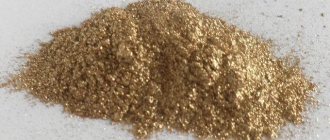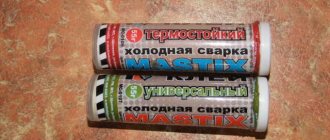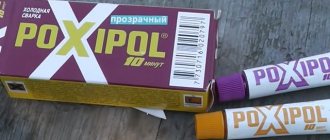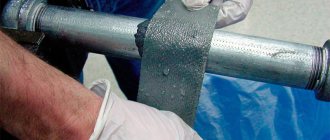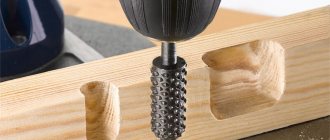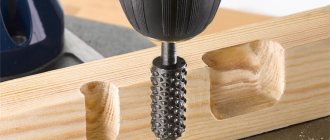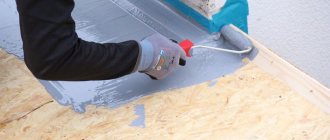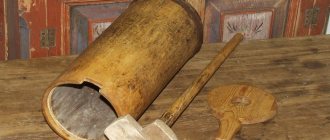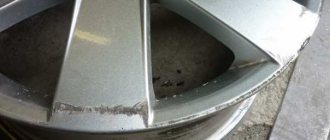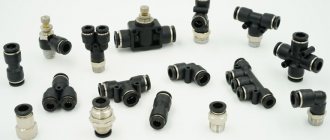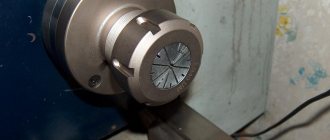Bronze powder, by definition, is a fine powder composition. The material is made from two metal alloys - zinc and copper. Paraffin and stearic acid are added to it to prevent sticking and oxidation of very fine particles. Bronze powder has a scaly structure that resembles the appearance of a petal. It has a color ranging from red to gold. It may have a certain shade - it depends on the percentage of zinc in the composition.
Production
The product is produced exclusively industrially, by repeated crushing of bronze powder. The procedure is carried out in special pneumatic installations or ball mills. Bronze powder is extracted from pure copper and zinc-based alloys by grinding. The end result is a powdery mass containing millions of tiny particles. High-grade bronze powder is obtained by passing through sieve number 0045. The final residue is 1%. Paints and varnishes and coatings based on bronze powder have a high hiding power, which is 4500 grams per square centimeter.
Types and composition of silverfish
The paint mixture received this name due to the content of fine aluminum powder obtained by crushing aluminum waste. Other components are not included in the silver powder.
There are two types of substance - pap 1 and pap2. They differ from each other in particle size and proportion of diluted mixtures. In the first case, the particles are much larger, and both options comply with GOS standards.
Today, there are also ready-made formulations that are suitable for use immediately after opening. However, some owners prefer a budget option - silver powder, which they dilute with drying oil themselves. This procedure is not complicated, and you can do it yourself. We will provide step-by-step instructions for the process in the next paragraph.
Where is the product used?
Bronze powder is widely used in:
- works related to decoration;
- printing industry;
- at enterprises producing paints and coatings;
- pencil production;
- paper coating;
- production of decorative and colorful labels;
- cosmetic industry.
Can be applied to smooth, patterned and embossed surfaces to create a gold or bronze effect. Bronze powder has also found application in painting:
- Parts of systems and tanks used in industrial enterprises.
- Heating radiators, radiator systems in factories.
- Parts for the boiler room that require additional protection from overheating.
- Surface details of ships and other port structures that are constantly under water.
- Water supply pipes, sewerage and ventilation systems.
- Bridges, fences and so on.
Painting surfaces with complex relief
The main difficulty in painting products with complex relief is that the finished coating must highlight all the depressions and convex elements in the smallest detail. Such work, in addition to knowledge of painting technology, also requires artistic skill from the performer.
The algorithm for performing this procedure is as follows.
- For surfaces with complex terrain, it is better to use oil varnish as a binder. To give this varnish a golden-brown tint without reducing its transparency too much, brown oil paint is added. In this case, you should buy paint that is specifically designed for artistic work.
- The binder composition tinted in this way is applied to the surface to be painted.
- To spray paint powder onto the object being treated, you can also use a gauze knot, as in the previous case. The subtlety of painting complex relief surfaces lies in the fact that during the process of spraying metal powder they should be placed at an angle. This spraying of powder paint allows you to effectively highlight the protruding parts of the relief, making them more golden.
» data-lazy-type=»iframe» src=»data:image/gif;base64,R0lGODlhAQABAIAAAAAAAP///yH5BAEAAAAALAAAAAABAAEAAAIBRAA7″>
Having some experience in processing such surfaces, you can predict the results of painting in advance and, accordingly, adjust your actions. It is not necessary to paint objects with complex relief using the spraying method. To do this, you can use a simpler method, which involves the use of a pre-prepared coloring composition based on bronze powder, applied with a sponge or cloth swab.
Classification and GOSTs
Based on purpose and use, the product is divided into the following types:
| Purpose | Marking | GOST |
| For paint | BOD | TU 48-21-721-81 |
| For offset printing | BPO | TU 48-21-150-72 |
| For printing | BPP | TU 48-21-150-72 |
| For pencil production | BPP | TU 48-21-150-72 |
| Jewelry | BPU | TU 48-21-36-81 |
| Vacuum powder insulation | BPI | TU 48-21-36-81 |
The main industries where bronze powder is used are shown in tabular form; GOST and markings indicate for what purpose the product should be used.
Application benefits
The advantages can be considered in two directions at the same time: aesthetics and functionality. And that's why:
- The metal-containing pigments included in the powder actually contain bronze, which means they really protect those parts and surfaces that need it from corrosion.
- Bronze powder for paint gives it high resistance to moisture, thereby extending the life of the item.
- The aesthetics of objects painted bronze or gold are high. They seem more noble and expensive; they can be used to advantageously stylize the interior, for example, in an antique setting.
- Paints and varnishes and coatings are characterized by high resistance to ultraviolet radiation, especially for those elements that are constantly exposed to the sun.
Preparatory work
An old surface on which cracks and chips are clearly visible, and for metal - also traces of corrosion - must be thoroughly cleaned and sanded before painting. The fact is that the presence of a metal-containing acrylic pigment will not protect the metal from corrosion, but will only aggravate it, since a layer of bronze paint is not one hundred percent protection from atmospheric moisture.
To remove the previous coating, you can use one of the following methods:
- Mechanical cleaning by brushing using a steel brush or rotary sanding attachment. The method is suitable for flat metal surfaces.
- Sandblasting, in which a metal surface is exposed to grains of sand under high pressure. In this way, you can obtain a cleaned surface of any configuration, but the apparatus itself is relatively scarce and most often has a stationary design.
- Chemical cleaning with special compounds that are applied to the old coating.
- Thermal cleaning, for which a powerful construction hair dryer is used, which increases the surface temperature to values at which the previous paint is separated from the surface. This method is not suitable for antique items, since it can irreversibly damage the configuration of the item.
The dry surface must then be primed using a clear primer.
Disadvantages of use
There are a number of disadvantages in using and working with the product, and those who want, but do not know how to use bronze powder should know about them:
- It belongs to explosive substances. Therefore, it should be stored in places as far as possible from sources of open fire, in a tightly sealed container or container.
- It cannot be applied to surfaces previously painted with oil-based paints, acrylic-based paints, nitro-enamel or NBC. The coating may bubble, move away from the base, or adhere very poorly.
- Acrylic bronze paint, contrary to advertising beliefs, is not so good. On surfaces painted with it, pockets of rust may appear, even at the time of application.
Precautionary measures
Despite all the advantages, bronze powder paint requires unquestioning adherence to safety regulations. Since this is an explosive substance, it is prohibited to store it in places accessible to open sources of fire. The best option is a place away from the living space and a tightly closed container or container. The work area, if it is indoors, must be well ventilated.
Bronze powder paint - application
You should handle bronze-based acrylic paint with care: contrary to the assurances of the manufacturers, pockets of rust may appear on the surface to be painted even during application.
Bronze-based paint should be applied in several layers so that the previous one has time to dry completely. You should not try to coat with bronze material products that were previously painted with acrylic paint, nitro-enamel or oil-based paints - this will lead to the formation of bubbles and poor quality of painting in general.
How to properly prepare paint with bronze powder?
There are several technologies for preparing this composition:
- With varnish - in proportions: 2 parts powder to 4 parts varnish.
- With synthetic drying oil, the mixing proportions are similar.
As for the consistency, it depends on the type of object that you plan to paint. To dilute the paint to the desired level, it is best to use turpentine, solvent and white spirit. This is the answer to another important question - how to dilute bronze powder for painting metal. If the work will be carried out using a spray gun, then the powder and solvent should be mixed in the following proportions: 1:1, if application is carried out using a brush - 1:0.5.
Methods for preparing formulations
It is necessary to mix the powder with the binder. The tincture will determine the main characteristics of the future coating, accordingly the possible areas of application, as well as the final cost. Tincture can be:
- varnishes on metal or wood for exterior and interior use;
- epoxy enamel;
- some types of adhesives;
- egg powder dissolved in water;
- gelatin.
The binder component is selected based on the type of surface being treated. For example, when treating wood products that will be used indoors, the tincture should be a clear interior varnish.
The color depth of the finished coating is determined by the ratio of the amount of bronze powder and the binder base. The deeper the color, the more powder you need to take. The consistency of the ready-to-apply composition resembles thick sour cream. This paint, with a bronze powder content of about 40%, will provide a reliable and effective coating.
What proportions should be observed? If varnish or drying oil serves as a tincture, then take two parts of powder for 4 parts of the base. If the solution turns out to be too thick, then turpentine, white spirit or solvent are used for dilution.
When using a spray bottle to apply a bronze layer, mix the solvent and powder in equal proportions. When using a brush, you need to take two portions of foundation per serving of powder.
Recommendations for the dyeing process
When using paintwork materials with bronze powder, you should adhere to the following precautions:
- wear protective gloves and personal protective equipment;
- open doors and windows; do not work with the composition in an unventilated area;
- properly prepare the surface for painting: clean it from dirt, dust, grease and rust;
- wooden elements must be sanded;
- Apply the composition in several layers, allowing the previous one to dry completely.
Spraying method
Painting by spraying, which uses bronze powder, is used in cases where objects with simple relief are subject to decoration. This coloring is performed in the following sequence.
- First, the surface must be prepared to ensure reliable adhesion of the paint layer to it.
- Dry powder paint is poured in a heap onto gauze laid in several layers. Gauze with sprinkled powder must be tied into a knot.
- A binder, which can be varnish or glue, is applied to the product to be painted. When applying the binder composition with a sponge or fabric swab, you must ensure that no fabric fibers or other foreign inclusions remain in its layer, which will worsen the decorative characteristics of the finished coating.
- While the binder composition has not hardened and is in a fluid state, shake a bundle of metal powder over it. Gauze, folded in several layers, acts as a sieve, through the cells of which only the smallest particles of paint powder spill out. When small particles of bronze powder fall on a layer of varnish or glue that has not yet hardened, they firmly adhere to it, forming a very beautiful and durable coating.
The great advantage of this painting method is that small particles of bronze are not coated with varnish or glue, which means they retain their bright metallic luster.
» data-lazy-type=»iframe» src=»data:image/gif;base64,R0lGODlhAQABAIAAAAAAAP///yH5BAEAAAAALAAAAAABAAEAAAIBRAA7″>
This is interesting: Copper ore and pure copper mining technology
Secrets of the demand for bronze powder for paint
It can be considered old-fashioned. After all, bronze powder has been used for paint for many generations. Judging by the available reviews, the product has proven itself well because:
- Such paints and coatings become like a “second skin” of surfaces, any kind. When painted, they form a very neat, thin, but durable and uniform layer, completely repeating the texture.
- The coating does not peel off and is resistant to abrasion. This property can well be called the other side of the coin, since it is difficult to remove if necessary.
- Under water, objects painted with this composition have a service life of at least 3 years. Outdoors – at least 7 years. Statistically, it takes much longer.
- The composition can be applied to any materials: concrete, wood, plaster, metal, brick, plastic and so on.
- Paint based on bronze powder is non-toxic, does not emit harmful substances, dries quickly, and adheres well.
Criterias of choice
Most people prefer to buy ready-made paints and varnishes. Such bronze compositions are completely ready for use and are distinguished by a number of unique properties. The main thing is to choose the right paint. The type of paintwork must match the surface to be painted. The characteristics of any composition are written on the label.
See also
Top 5 paints for wheels and DIY application at home
List of existing bronze paintwork materials:
- acrylic dispersion (for wood, ceramics, plastic, painting objects, painting walls);
- bronze powder and drying oil (for wooden products, plastered walls);
- acrylic in cans (for painting relief products);
- organosilicon (for anti-corrosion painting of metal, for concrete and brick bases);
- heat-resistant (for fireplaces, stoves, radiators);
- alkyd (for wood, metal, plastered surfaces);
- oil (for artistic painting).
Features of use
Before you start painting, familiarize yourself with some of the nuances of using such compositions:
- to achieve greater plasticity, the layer of the applied product must be very thin;
- In order for the coating to last longer, you need to very carefully rub (with a sponge or a hard brush) the paint on the surface that is being painted;
- if the powder was diluted with nitro varnish, then you need to work with such a composition very deftly and quickly, otherwise it will begin to dry or thicken right before your eyes;
- When painting metal surfaces, they should be pre-treated with a primer.
Coating
To give the product a metallic shine, you can make the composition yourself or buy it ready-made in aerosols.
Before applying the coating, any product must be cleaned of contaminants. Wooden surfaces are pre-sanded, and metal surfaces are treated to prevent rust. Often craftsmen prefer to remove the old coating:
- by mechanical cleaning with a grinding attachment or brush (applicable to metal surfaces);
- sandblasting (cleaning metal surfaces under the influence of grains of sand);
- chemical cleaning (special compounds react with the old coating);
- thermal cleaning using a hair dryer.
Then the varnish or paint is applied in a thin layer, which is literally rubbed over the surface. To obtain the thinnest possible layer, use a sponge or stiff brush.
When using nitro varnish as a tincture, apply bronze paint as quickly as possible until the composition sets.
If the coating is to protect the product from corrosion, then it must be primed before applying paint.
Coating of smooth products
There are usually no problems with applying paint to equal surfaces. The main issue in such work is the determination of the connecting component. If the product will be exposed to aggressive influences, then use varnishes for external use.
Such surfaces can be coated with a brush or even spray equipment. Compositions in aerosol cans are also suitable for applying a high-quality layer.
Sputtering
Products with simple relief can be decorated using the spraying method. It is worth starting staining with this method again with preparation. It is necessary to apply varnish or glue to the degreased surface of the product. When applying the binder component, care must be taken to ensure that no lint or other foreign bodies remain on the product.
Bronze powder is first poured onto gauze folded in several layers, which is then tied in a knot. When the bundle is shaken over a varnished product, small particles of powder are securely attached to it. This application allows you to obtain a very durable and beautiful metal-like coating.
Application on difficult terrain
To apply high-quality paint on products with complex relief, you need to have some skill.
How to apply paint in this case? The secret is simple - it is better to use oil varnish as a binding base. To give it a noble golden brown hue, you can add a little brown oil-based paint.
This composition is applied to a fat-free product. The powder, as with spraying, is formed into a slide on gauze and a knot is tied.
Of course, this method allows you to achieve high-quality and effective coverage, but for beginners it is better to use a simpler method. To do this, prepare a coloring composition with bronze powder in advance, and then simply apply it with a cloth swab or sponge.
How to get a patina effect
The pinnacle of craftsmanship is considered to be giving relief products a patina effect. How to do it? First, the prepared composition is applied to a clean surface. Wait until the layer dries completely. Then you should apply a layer of stain or liquid bitumen varnish, also filling all the relief depressions. Without waiting for this layer to dry, use a sponge or cotton cloth to wipe all convex surfaces. Excess varnish in the recesses must also be removed. After complete drying, the product can be used. To achieve the effect of a polished surface, some craftsmen additionally tint the convex parts with a bronze composition.
How to remove a random paint stain?
Accidental spillage of paint onto other objects during work is a common occurrence. If such an oversight occurred and the composition had time to dry, then it can be removed with the solvent in which the powder was diluted. If you purchased a ready-made composition, but what it consists of is unknown, you can use the following recommendations:
- Drop regular sunflower oil onto the stain, leave for 10 minutes and rub it vigorously with a dry cloth.
- Apply regular nail polish remover that does not contain acetone to the stain. Fresh traces will be removed very quickly.
What oil paints cannot be mixed?
If the table helped you with mixing paints, then there is also a table that will tell you which paints it is not advisable to mix with each other . Why? Yes, because it can cause the paint to crack, darken or smudge the color in oil painting. I hope this table of unwanted art oil paint mixtures helpful!
An artist must know how and what colors can be mixed and what colors cannot be mixed. I think this article provides expanded answers to these questions.
There are countless shades in nature. Sometimes, in order to convey the plot most realistically, you need tones that cannot be found in the palette. But choosing them yourself, without sufficient experience, is quite difficult.
A color mixing table greatly simplifies this process. It allows you to get the desired result, both in fine art and in construction, when creating an individual design solution in the interior.
If we talk about drawing, we need to remember that the overall appearance will be influenced not only by the exact ratio of paints, but also by the background, the orientation of the stroke in relation to the thread of the canvas, the thickness of the application and other points.
For convenience, we will divide the shades into groups of primary colors and tell you which paints should be used to obtain a particular tone of the required saturation.
